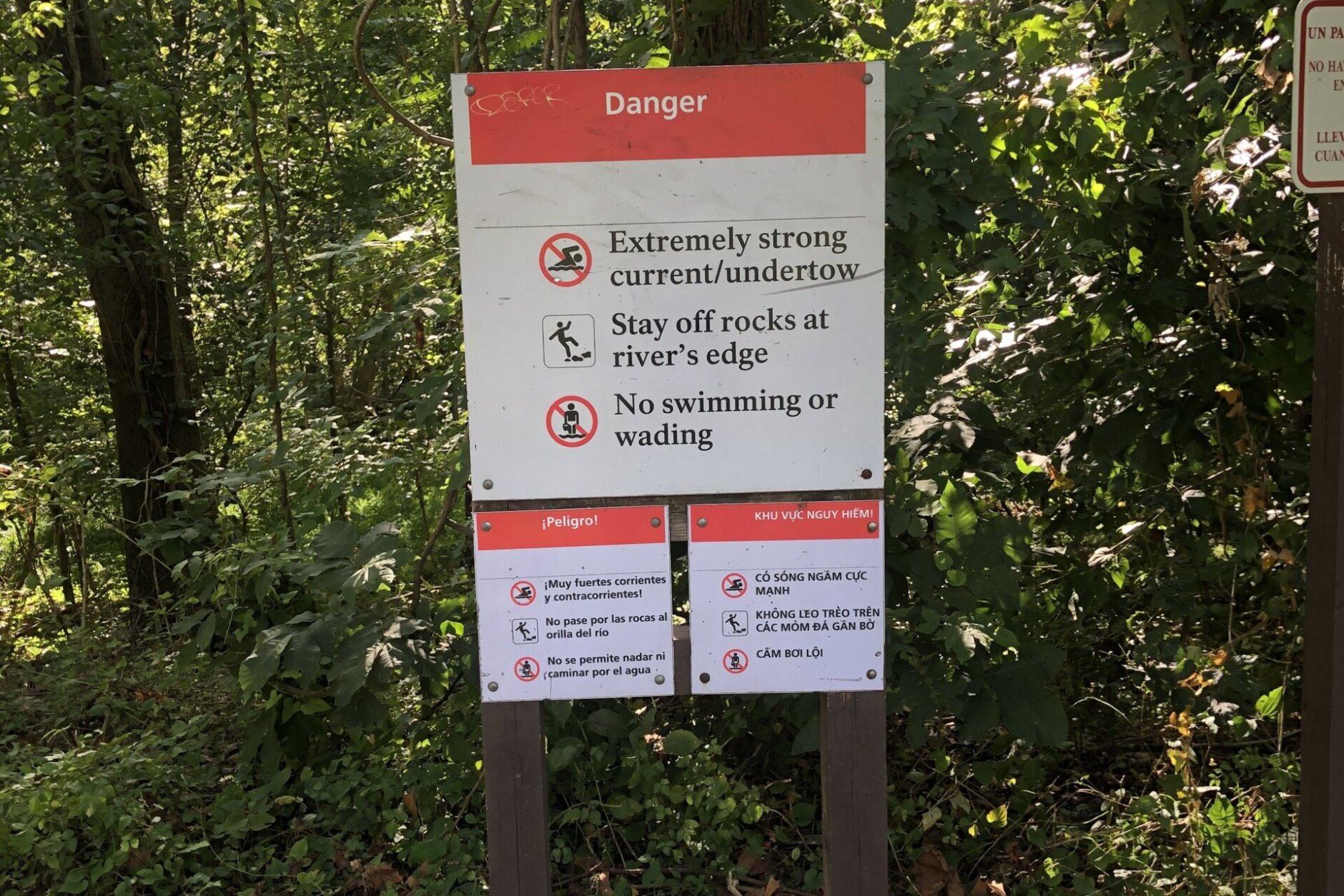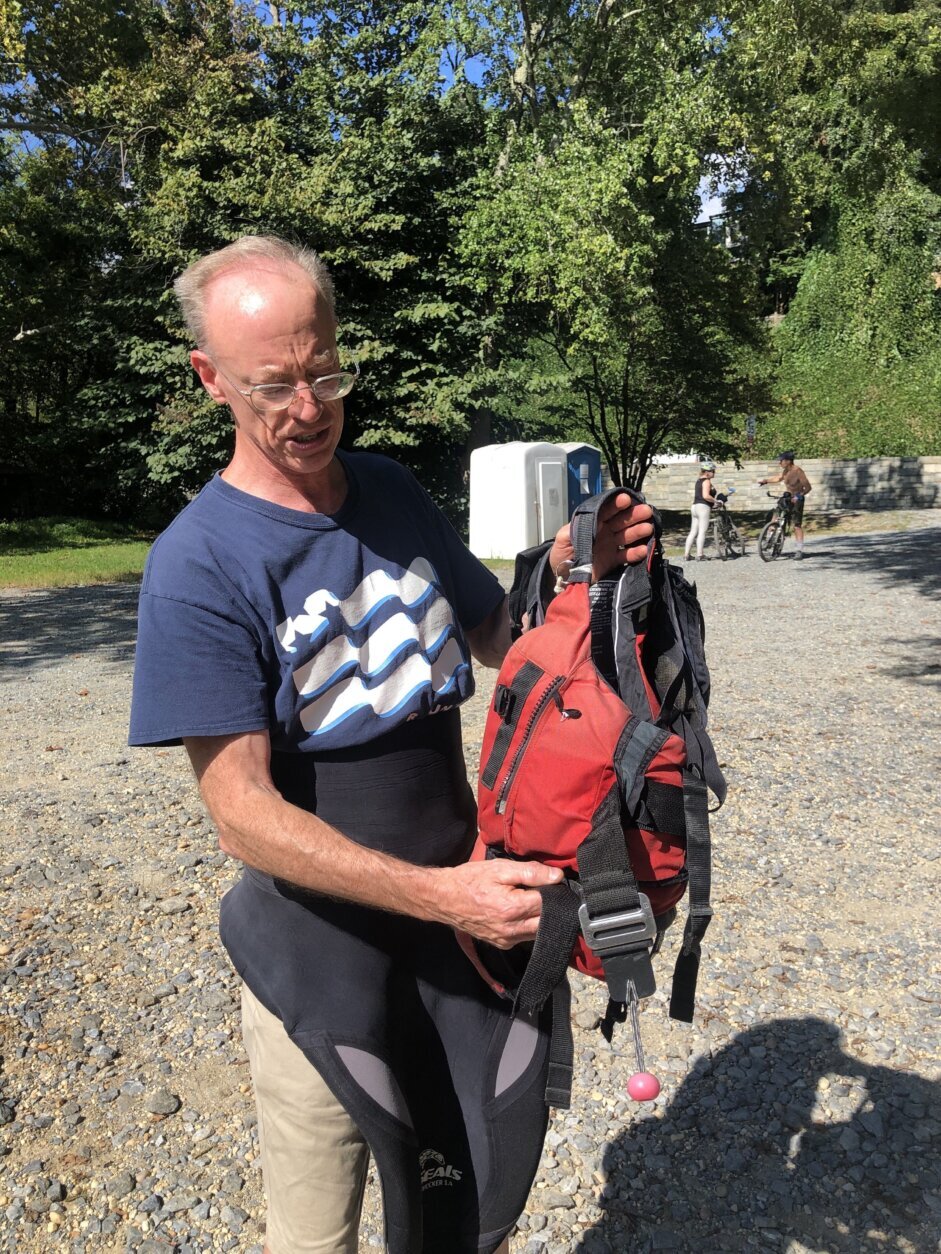





The death of a whitewater kayaker on the Potomac River on Sunday has drawn attention to the risks that river users face when water levels are low.
Ella Mills, a third-year exchange student from Dublin and a member of Columbia University’s whitewater kayaking club, died after being pinned under a rock in a hydraulic vacuum at Little Falls on a weekend trip for students from the New York City university.
The Potomac River’s water level measured 2.7 feet at the Army Corps of Engineers’ downstream gauge on Sunday when the accident occurred. Experienced kayakers say more normal water levels are usually above 3 feet and are considered high when they’re 6 to 7 feet or higher.
“There’s different risks when it’s high or low. Every level has its own risks … entrapment is the major risk when it’s low flows. That’s what happened in this particular case is the person got stuck. Something held them in place,” said Charles Duffy, a certified swift water rescue and whitewater kayak instructor.
Low water levels can expose more rocks with more water backflows, and in swift water, not all is as it appears.
“If water is going up against a big boulder, you’d expect it to pillow up, right? If it doesn’t pillow up, the water’s got to be going somewhere in that particular case. More likely, it’s going into either an undercut or a sieve, which is like a hole formed by rocks, and you don’t want to wander right into that or you’ll get sucked into that bad spot there and it’s hard to escape at that point,” said Duffy.
An incident report filed to the American Whitewater Association by a rescuer on the scene of Sunday’s accident said that Mills was one of about 7 in the group of 25 that made the run over Little Falls, and while they intended to kayak on the Maryland side of Little Falls, the forces of the river pushed Mills and her kayak to the Virginia side of the run, which Duffy said is made up of water that moves a little bit faster.
Duffy advises kayakers to get training, use appropriate equipment and paddle in groups to keep an eye on each other.
“Kayaking is a wonderful sport that everybody can enjoy at all levels, all skills … make sure you go with people you trust and … take your time ramping up the difficulty,” Duffy said.








